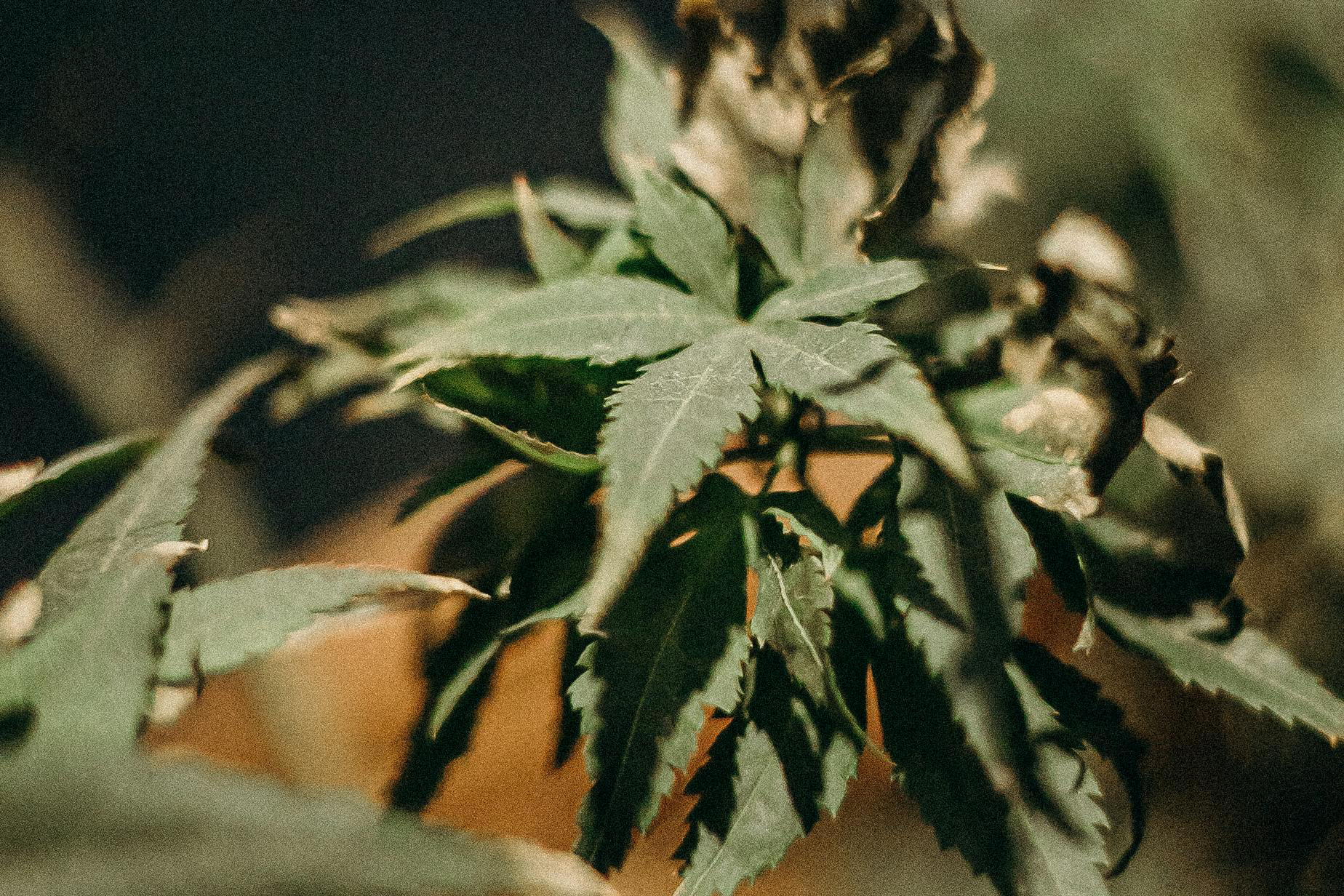
Are Those Trichomes or Mold? What Does Moldy Weed Look Like?
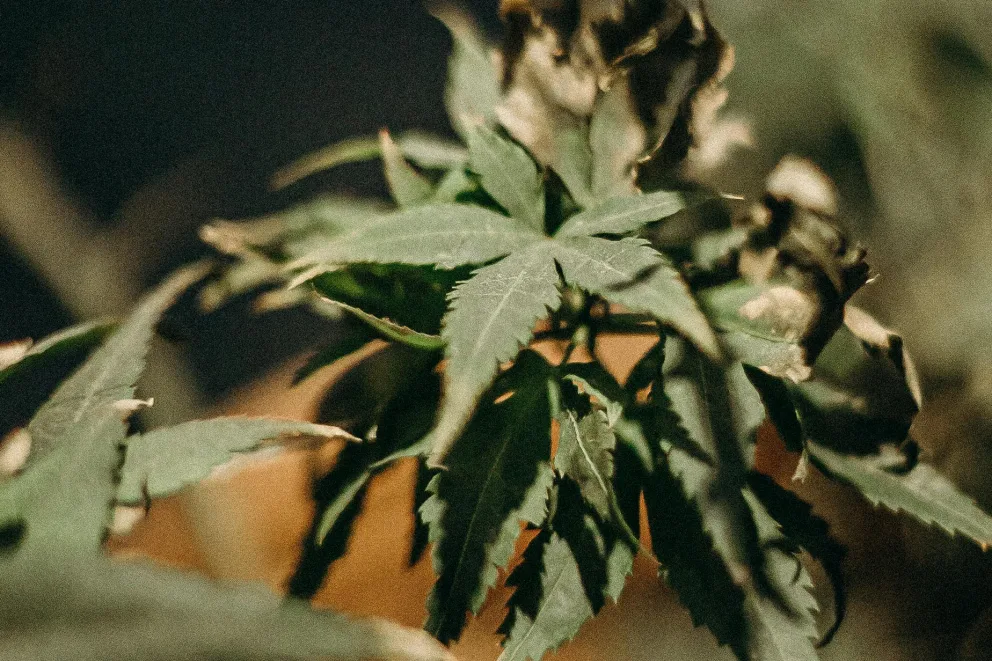
Photo by Cottonbro Studio
One of the benefits of the current cannabis revolution is a new holistic approach to medicine. Consuming live plants as part of your healing or treatment plan can be enticing for those more interested in homeopathic remedies. The only issue is that plant matter can go bad. What happens when weed gets moldy?
The shelf-life of traditional pharmaceuticals can be months to years. However, plants like cannabis can develop mold, especially if it’s not sufficiently treated or dried properly. The curing process of cannabis flower can help but it’s not meant to last forever. Additionally, there is a shelf-life of THC which can degrade over time depending on how long it’s been exposed to light and oxygen.
THC over time will degrade and convert into cannabinol (CBN) which is more likely to make you tired than high. Unlike the dangers of consuming expired medication, consuming older cannabis will often only mean you’re likely to get less high than when your chosen product is freshest.
The amount of THC can degrade over time, although, thanks to the space race to have high volume THC products this can often mean you’ll still have a fair amount of THC even if the weed gets past its expiration date. However, what are the dangers of consuming moldy weed?
Luckily, the medical legalization of cannabis has led to more rigorous testing and THC products have expiration dates with more in-depth procedures of prep to prevent mold infestation but that doesn’t mean it can’t happen.
Potential mold or fungal infestation is still possible. After all, it is a plant product so how can you check any bud you may have in your medicine cabinet or bedside table to ensure it’s still safe to use? What’s the worst that can happen if you do consume moldy weed?
This post will cover the various ways to identify moldy weed, the potential sources of mold infestation and how bad is it to use moldy weed?
Can Weed Get Moldy?
Like any plant, weed can develop mold. Additionally, most cannabis and products actively attempt to preserve as many of the cannabinoids, terpenes, and flavonoids as possible. This ensures you have a full-spectrum experience which means it more thoroughly engages with your endocannabinoid system.
The entourage effect is how the sum of the hundreds of compounds in cannabis net one singular effect on your body. Many cannabis cultivators seek to preserve as much of that “full spectrum” entourage effect as possible.
After all, if you’re going to spend the time sifting through smell tests at your local dispensary to find your ideal strain you might as well get the full spectrum of that strain’s benefits.
This means cannabis producers may try to preserve as many of the natural compounds in cannabis which can mean less chemical intervention or using pesticides to preserve as many of these natural compounds.
Like anything from produce to houseplants your cannabis stash can also face the same environmental factors and potential for mold infestation. Most cannabis companies take steps to avoid this but the sheer volume of the cannabis industry does not guarantee every product will not be at risk for mold.
A UC Davis Study examined fungus on weed samples purchased from legal cannabis dispensaries and found cryptococcus, mucor, and aspergillus. These fungi can cause lung infections or health issues in people with weakened immune systems. While not severe, these are still the potential source for fungal based infections in the body.
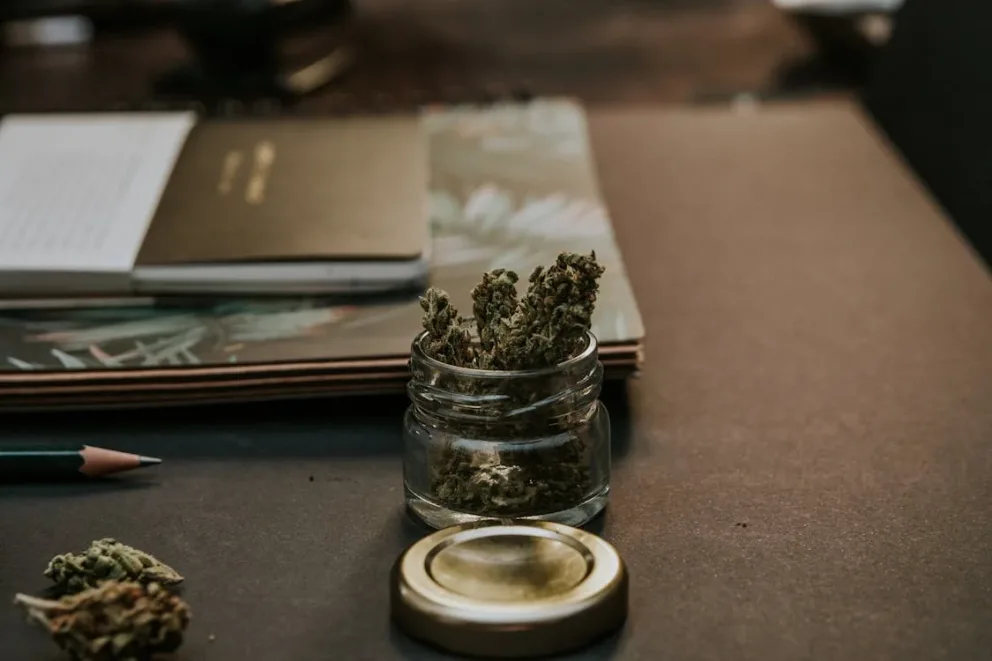
Photo by Yash Lucid
Moldy Weed Vs Trichomes
One challenge for the average person is identifying moldy weed vs. trichomes which are natural parts of the cannabis plant. Cannabis flowers are the most THC-dense part of the plant thanks to trichomes which are gland-like growths that produce many of the compounds we seek out from marijuana.
Kief which often gathers at the bottom of your weed grinder is a fine dust made up of the trichomes that detach from the plant material. The pistils of cannabis flowers which can often look like little brown hairs can often be confused for trichomes or even for a potential mold growth.
Trichomes can be tiny and hard to see with the naked eye. They are firm mushroom-shaped small glands filled with resin. They can often appear like small thin white hairs or crystal formations that are the resin in the trichomes.
Given the size of trichomes it can be easy to confuse them for mold because both may seem slightly dusty. After all, when you look at the general texture of kief it can vaguely resemble powdery mildew or mold while the color is distinctly different.
Trichomes can often have a kief-like color of a green, yellow, or tannish shade of off-white. They can also appear to be semi-clear or whitish. However, mold on weed can often be more stark white or grayish and appear to be hairlike or fuzzy. These hair-like growths can often appear to be connected while trichomes can seem like individual tiny growths.
Trichomes can vaguely resemble a soft subtle peach fuzz or sometimes have crystal-like formations. It can even in some cases look purplish in some strains. Meanwhile, mold is more likely to look familiar like the mold that can develop on vegetables.
Let’s dive deeper into identifying mold on weed.
What Does Mold Look Like On Weed?
We’ve all seen mold on everything from oranges to bread to our bathroom walls. What does mold on weed look like? One key is that mold will look like it is not a natural part of the plant. It looks like something that is growing on the cannabis while also having a stark difference in color.
Trichomes can sometimes have a bit of a white-ish or clear color but mold can be more of a stark white and distinct in its texture. Here are some other ways to identify mold:
If you see powdery white or gray fuzzy growths on cannabis this can be mold. Again, the growth can be web or cotton-like where it looks like it’s all connected in a hairlike formation. That’s a good way to separate mold or mildew from trichomes.
Brown or yellow wilted leaves or buds can be a sign of bud rot that we’ll elaborate on. Additionally, if the bud begins to develop dark or brown spots that can also be a sign of mold infestation.
The color of mold can often be a stark contrast. Trichomes often have a uniform color across your cannabis buds so it’s less likely to develop patches so any patches that are off color are a clear sign of mold.
Additionally, trichomes are attached to cannabis so if you observe a white powdery dust this is more likely to be mildew. While trichomes can come off as kief they are still attach to cannabis buds and area also likely to be filled with sticky resin so a dry white power could be mildew.
Another way to identify moldy weed is to observe the smell. Musty, moldy, or rotten smells amid the smell of terpenes can be a sign that mold has taken hold of your bud.
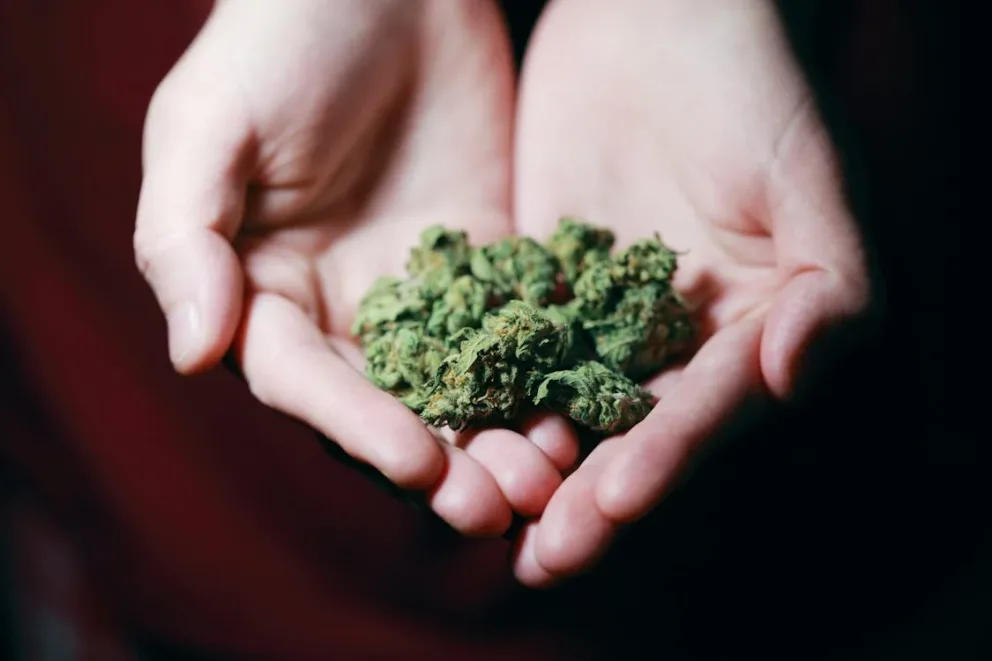
Photo by Alexander Grey
What Does Moldy Weed Look Like?
Moldy weed can look different from traditional weed by having a random area of growth or discoloration. It will often seem like a foreign growth because trichomes can be fairly uniform. While some areas may have a higher concentration of trichomes they will often appear consistent in color. Additionally, trichomes can look a little larger than dust particles.
Moldy weed is more likely to have random patches of white mold or mildew growth. These random sections of discoloration can be a way to identify moldy weed from traditional cannabis. It’s not common for trichomes to vary in color or size so if you see a section of your cannabis that seems distinctly off or different trust your instinct.
Additionally, the texture of moldy weed can often be mushy, softer, or seem squishy. These sections can be a sign of bud rot that’s progressed to the flower of cannabis.
What Does Bud Rot Look Like?
Bud rot, also known as botrytis or gray mold, is a fungal disease that can affect the buds and flowers of cannabis plants. Botrytis can exhibit a few different distinct characteristics that can take over your bud.
Discoloration
The first signs of bud rot can include discolored areas on the buds or flowers. These areas may appear brown, gray, or blackish, contrasting with the healthy green color of the surrounding plant material.
Rotting And Wilting
Infected buds and flowers will begin to rot and wilt, losing their structure and becoming mushy or slimy to the touch.
Fuzzy Gray Mold
As bud rot progresses, a fuzzy gray or white mold may appear in the affected areas. This mold is made up of the fungal spores and hyphae (filaments) of the botrytis fungus which explain the hairlike growths.
Webbing
In advanced cases, you may notice white or grayish webbing or threads spreading across the affected buds and surrounding plant material. These are the hyphae of the fungus.
Powdery Appearance
As infected buds and flowers dry out, they may take on a powdery appearance, with the fuzzy mold turning into a dusty, gray-brown powder.
Unpleasant Odor
Bud rot often produces an unpleasant, musty, or rotten smell which is a clear sign that your stash has become infested.
Apply for a Medical Marijuana Card Online Today
Join over 100,000 patients who have chosen Green Health Docs as their medical cannabis doctors. We have a 99% approval rate and offer a 100% money back guarantee!
Why Is My Weed Brown?
Brown weed isn’t an automatic cue that your cannabis has a mold or fungal infestation. There’s actually a few different potential reasons for brown weed.
Oxidation/Aging
Over time, cannabis buds can naturally turn brown due to oxidation and exposure to air, light, and heat. These are bad for THC and it may be a sign that this bud has had much of its THC converted to CBN.
However, this is a natural part of the aging process and doesn’t necessarily mean the weed is bad, but it can affect the potency and flavor. If the THC has converted to CBN due to oxidation or degradation it may mean you’re more likely to get tired than high as CBN can cause drowsiness and is much less psychoactive than THC.
Improper Curing
The high demand of cannabis products does mean that some batches may not have the same level of care. If the cannabis was not properly cured, dried, and stored after harvesting, this can cause prematurely browning.
Incomplete curing can lead to excess moisture, which promotes browning and potential mold growth.
Heat Exposure
Excessive heat during growth, drying, or storage can cause the buds to turn brown or even become burnt-looking. Heat can degrade the cannabinoids and terpenes, reducing quality.
Additionally, if you ever use a herb vaporizer like a Pax some of the spent weed that’s been cooked to remove the THC can be left looking brown and almost toasted in color.
Excessive Light Exposure
Like heat, light is also an enemy to cannabis if you want the optimum THC amount. Prolonged exposure to light, especially UV light, can cause the buds to turn brown and degrade faster due to oxidation and chemical reactions.
Nutrient Deficiencies
Certain nutrient deficiencies during a plant’s growth, such as a lack of magnesium or phosphorus, can cause leaves and buds to turn brown or develop brown spots.
Improper Cleaning
If the plants were not properly flushed before harvest, excess nutrients or chemicals can cling to the plant and can cause the buds to turn brown or develop a harsh taste and smell.
The final reason that your bud may have turned brown is mold or bud rot. While it isn’t always the case some of these conditions can increase the likelihood or speed with which your mold might become moldy. Be sure to check it against the characteristics of moldy weed to ensure that your brown cannabis is safe to smoke or consume before you use it.
You may wonder, how bad can it be to use moldy cannabis?
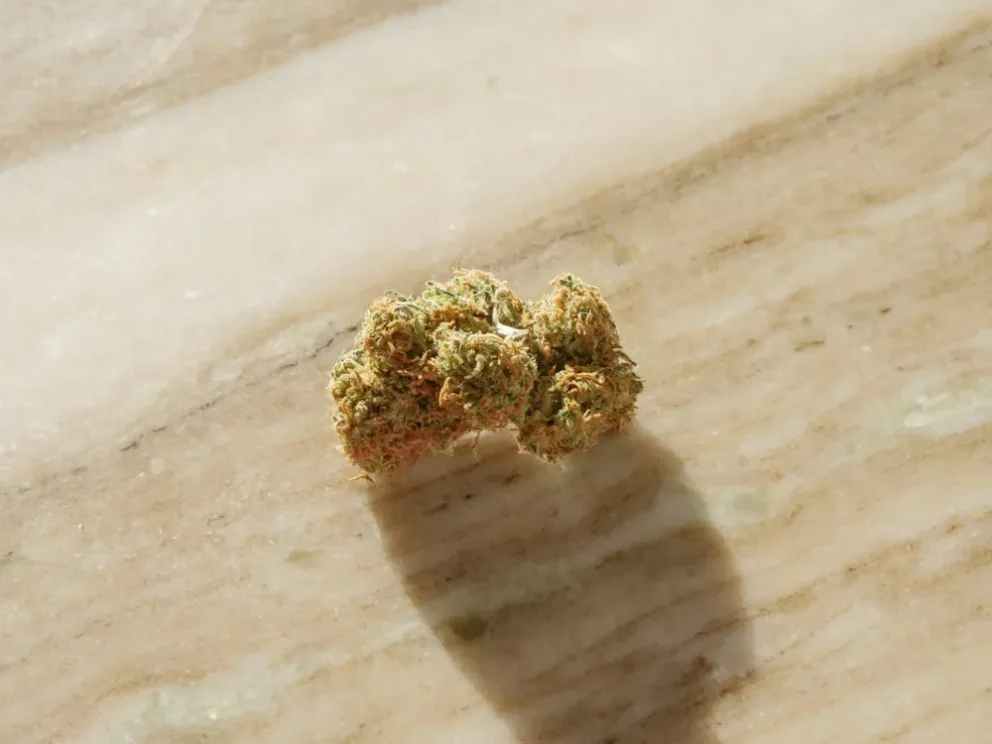
Photo by Kindel Media
What Happens If You Smoke Moldy Weed?
Smoking moldy weed may seem harmless, after all, you may think that by heating it you are killing any bacteria or pathogens. While it may not be the worst thing in the world it’s not without potential risks of health issues. After all, you’re exposing your lungs and bloodstream to high levels of mold which can cause major health issues.
Smoking moldy weed can introduce potential toxins and mold growth into your body. This could lead to big problems, and depending on your immune system could quickly escalate.
Again, that UC Davis study found live samples of cryptococcus, mucor, and aspergillus which can all cause breathing issues and potential fungal infections in the body. Here’s some things that can happen from smoking moldy weed:
Respiratory Issues
Inhaling mold spores and mycotoxins (toxic chemicals produced by molds) can irritate the lungs and airways, leading to coughing, wheezing, and breathing difficulties, especially for those with asthma or other respiratory conditions.
Lung Infections
In some cases, mold exposure can increase the risk of developing lung infections, such as pneumonia or bronchitis, particularly in individuals with weakened immune systems. It can also run the risk of causing a fungal infection like C. neoformans Infection, Aspergillosis, or Mucormycosis. These fungal infections can cause chest pain, chest pain, bloody sputum, difficulty breathing, and fever.
Allergic Reactions
Some people can have intense allergic reactions to mold which can cause sneezing, itchy eyes, skin rashes, or even anaphylaxis (severe, potentially life-threatening allergic response). You may not know your level of allergy to molds and fungus as you are not likely to consume them or heavily inhale them without observing a clear infestation.
Mycotoxin Poisoning
Certain types of mold produce mycotoxins, which can cause various health issues when ingested or inhaled, including nausea, vomiting, diarrhea, headaches, dizziness, and in severe cases liver or kidney damage.
Exacerbation of Existing Conditions
Smoking moldy weed may worsen pre-existing conditions like asthma, allergies, or other respiratory problems. If you have a compromised immune system due to HIV/AIDS or an autoimmune disorder you can be more likely to be impacted by smoking moldy weed.
Unpleasant Experiences
Moldy cannabis often has an unpleasant taste and smell, and consuming it can lead to harsh, unenjoyable effects, potentially leading to coughing fits or nausea.

Photo by Cottonbro Studio
Final Thoughts
Cannabis can provide a more homeopathic treatment to cancer, pain, and other conditions. Not to mention it’s chock full of antioxidants and other healthy phytochemicals that can boost your health. However, with nature comes natural pests like mold.
Moldy weed is a natural part of the passage of time. Like with your produce your cannabis can develop mold if exposed to moisture or when improperly stored. One way to avoid potential exposure to moldy weed is to get your cannabis from medical dispensaries.
Medical dispensaries are charged with the care of patients and it may be worth getting medical-grade cannabis rather than simply recreational products. If you want to get your medical marijuana card, Green Health Docs makes the process seamless.
 This article has been reviewed by Dr. Anand Dugar, an anesthesiologist, pain medicine physician and the founder of Green Health Docs. Graduating from medical school in 2004 and residency in 2008, Dr. Dugar has been a licensed physician for almost 20 years and has been leading the push for medical cannabis nationwide.
This article has been reviewed by Dr. Anand Dugar, an anesthesiologist, pain medicine physician and the founder of Green Health Docs. Graduating from medical school in 2004 and residency in 2008, Dr. Dugar has been a licensed physician for almost 20 years and has been leading the push for medical cannabis nationwide.
